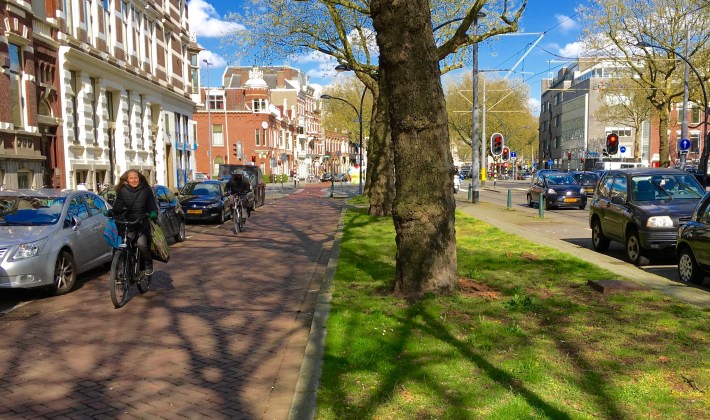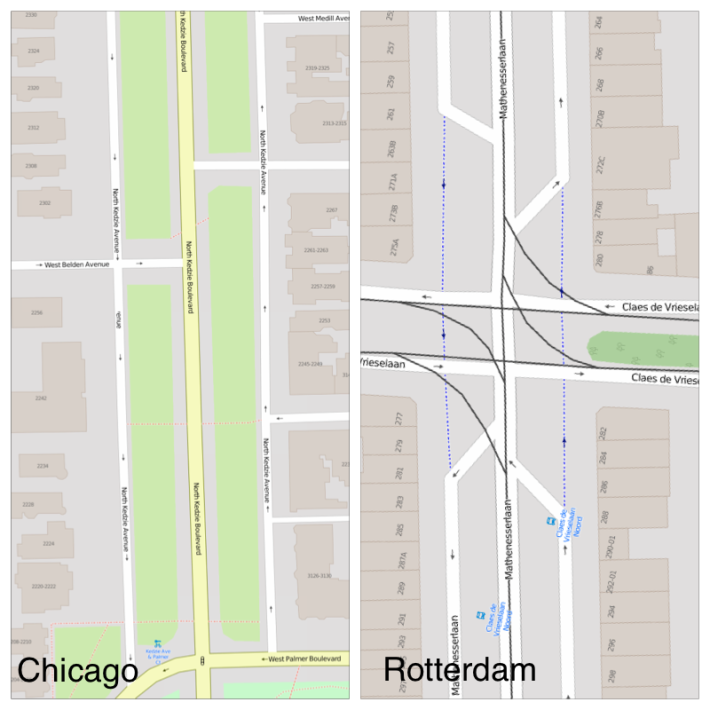
I've discovered few similarities between the city of Rotterdam, where I've been living for seven weeks, and Chicago. The most striking similarity is the nearly identical layout of the boulevard streets. While biking from my apartment in Rotterdam towards the cool neighborhood of Witte de With, I realized that as I was cycling on the side road of a wide street, I was really biking on a facsimile of Kedzie Boulevard in Chicago.
In the middle was a two-way "main drive," where through traffic and buses ran, and on both sides, separated by a landscaped area, were one-way service drives for access to individual houses or apartment buildings – just like in Chicago. Other Chicago streets with this layout include Franklin Boulevard and Ogden Avenue.
The difference was that the city of Rotterdam implemented "filtered permeability," by preventing motorists from driving more than one block at a time on the service drives. As a motorist driving on the service drive approaches the next intersection, there's an "exit ramp" that carries vehicles over the landscaped area and onto the main drive.

Side streets that intersect the boulevard can only be entered from the main drive, eliminating the possibility of using the service drive to get around a backed up intersection on the main drive in order to turn right.
A bike path connects the "end" of this service drive to the start of the next one, on the other side of the intersection. Of course, the sidewalks are continuous. Doing a similar layout in Chicago would require eliminating only about one car parking space per block.
The video demonstrates how it works. The Rotterdam design can't exactly be copied and pasted here because of the parklike status of the landscaped area between the main and service drives in Chicago. But a modified design could still reduce through traffic on the residential service drives, thus making it an even more comfortable place to cycle on.
However, the area of asphalt could stay the same or even be reduced, and replaced with more green space, as the ramp over the median replaces the need for so much asphalt in the secondary intersections between the side street and the service drive.
The benefits of using existing infrastructure to accommodate bicyclists and residents simultaneously cannot be overstated. This way there's no need to build separate bikeway, and simple traffic calming measures like bike-friendly speed humps would be inexpensive to built. Complete access to each and every building is maintained, yet residents would live on a slightly quieter block.
By Chicago standards, our city's service drives are already pleasant to cycle on, but changes to eliminate non-local traffic and create better connections for cyclists at and through intersections would create truly livable streets.
This post is made possible by a grant from the Illinois Bicycle Lawyers at Keating Law Offices, P.C., a Chicago, Illinois law firm committed to representing pedestrians and cyclists. The content is Streetsblog Chicago's own, and Keating Law Offices neither endorses the content nor exercises any editorial control.





